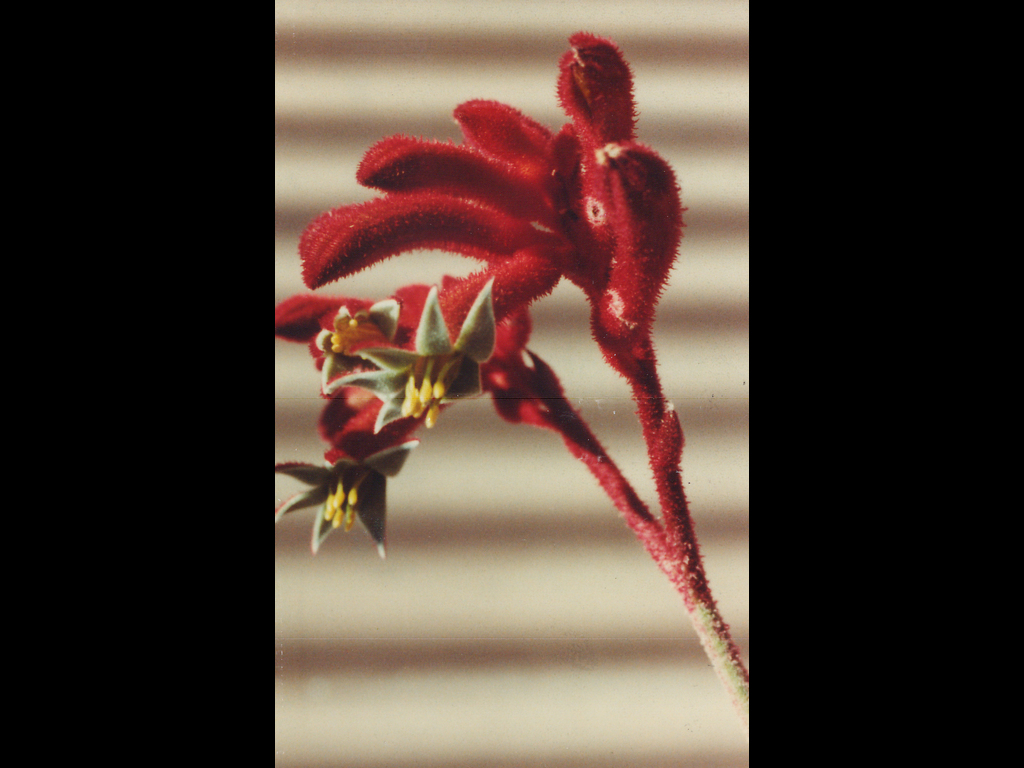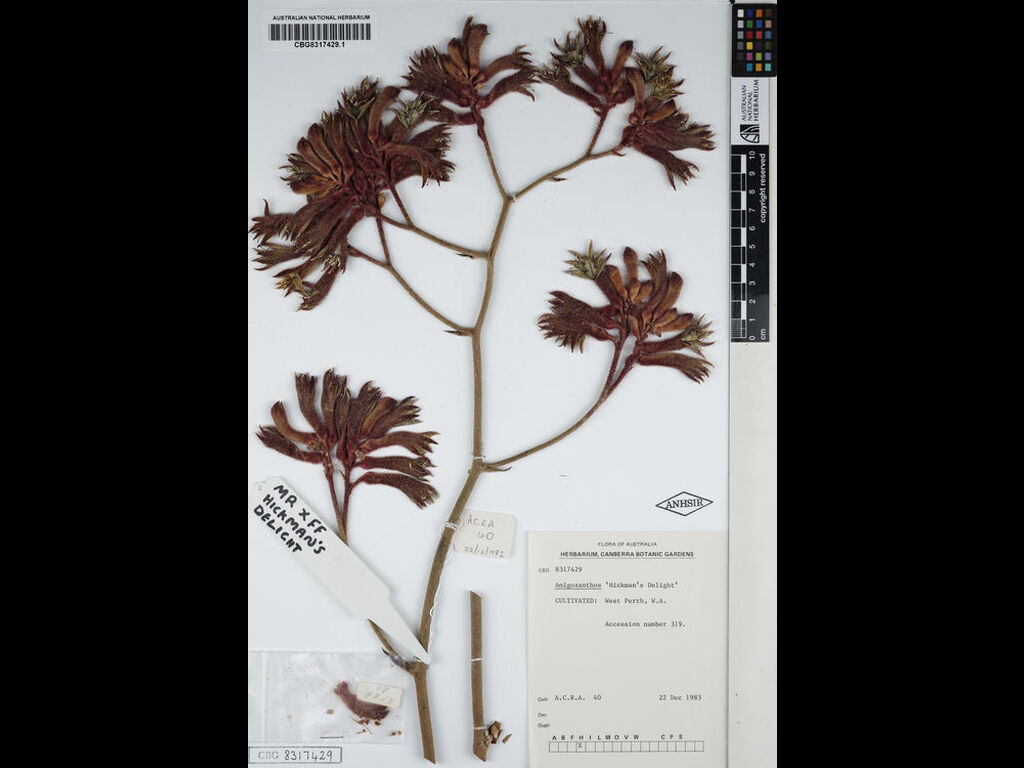Anigozanthos 'Hickman's Delight'
- File Number
- 320
- ACRA Field Book Number
- 40
- Registration Date
- 10/10/1991
- Application Received
- 01/12/1983
- Family
- Haemodoraceae
- Cultivar Name
- Anigozanthos 'Hickman's Delight'
- Origin
- Anigozanthos 'Hickman's Delight' resulted from doubling chromosomes of A. manglesii x A. rufus, then using the pollen from A. flavidus to complete the cross. The cross was performed by Mr K.R. Oliver of Western Australia. Cultivar first received by the Authority in December 1983. The applicant is the Perth Zoo Social Club, c/o 20 Labouchere Road, South Perth, 6151.
- Characteristics
- Stems to + 1.5m with a covering of pale orange plumose hairs becoming more dense and dark red in colour at the final division of the raceme, some pale hairs persisting. Flowers on pedicels to ca. 8mm long, the wool dard red with scattered pale hairs lending a dusty appearance. Perianth tube to + 4cm long, minutely scabrous inside, the hairs becoming more linear finally with stellate tips; lobes + 1cm long, with grey-green sometimes pale orange woolly plumose hairs inside. Anthers shorter than dark purple filaments, the connective with a gland like appendage. Ovules more than 10 per locule. Diagnosis: Anigozanthos 'Hickman's Delight' differs from A. manglesii in having a shorter perianth tube which is rounded at the end, flat in A. manglesii. The anthers are greenish yellow, (green in A. manglesii) and the anthers are arranged in a part circle (flat in A. manglesii). The perianth lobes are not as reflexed as in A. manglesii and the colour of the perianth is the same through to the base, (two tone in ordinary A. manglesii). The leaves are evergreen. It differs from A. rufus in having larger flowers, i.e. larger and broader corolla tube. Has fewer flowers and less branching. The colour of the flower is closer to A. rufus than any of the other species. The leaves are deeper green, with A. rufus leaves having a greyish tinge. A. 'Hickman's Delight' is different from A. flavidus in havung shorter flower stems, fewer flowers and less branching. The perianth tube is much broader and a fraction longer than A. flavidus. The perianth lobes are much broader and slightly more reflexed than A. flavidus. Anthers are larger, greenish yellow, orange in A. flavidus, the filaments are much longer with the outer two being curved, set at an angle of 45 degrees in A. flavidus. The leaves are similar to A. flavidus but not as upright. The flowers are significantly larger than in other red flowered cultivars. Other comments: This cultivar flowers from November to December in W.A. It has been in cultivation since 1972.
- Cultivation
- The cultivar grows best in an open, sunny position. Good drainage is required, and it responds well to watering
- Publication
- Australian Cultivar Registration Authority (1991), Some Kangaroo Paw Cultivars (continued from 16(126)). Australian Plants 16(127): 135
- Colour Coding
- RHS Colour Chart 1966 Flowers: plumose hairs: Red-purple Group 59, perianth tube:overall colour close to Red Group 46B Leaves: Green Group 138A
- Propagation
- Division or tissue culture
- Applicant Name
- Perth Zoo Social Club
- Uses
- As part of a mass planting or mixed in a shrubbery, or as a spectacular feature plant. Attracts nectar feeding birds.
- Availability
- Unknown
- ANBG Accession Numbers
- ACC320, ACRA040, CBG8317429
- NSL ID
- -

